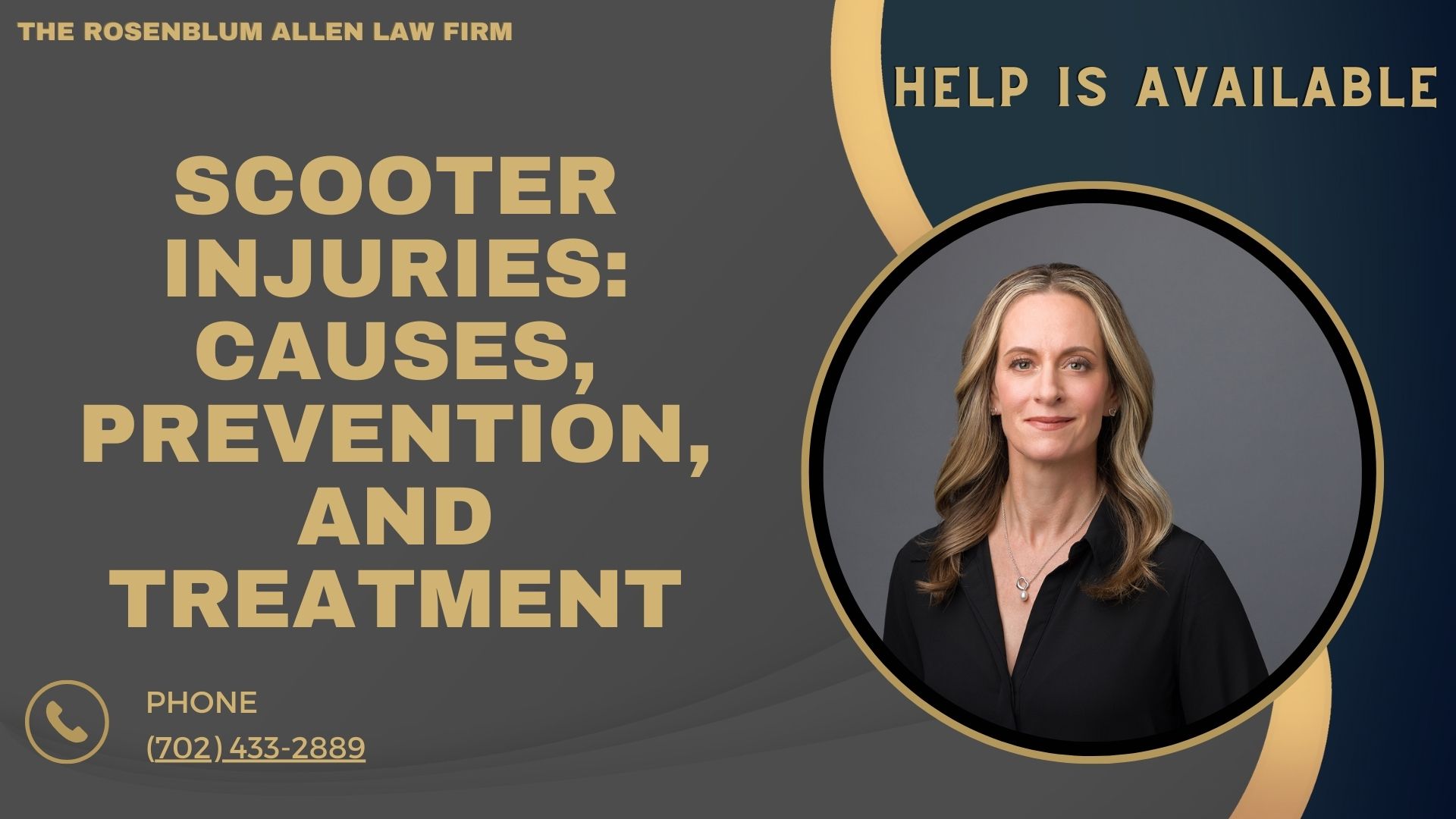Scooters are fun, convenient, and eco-friendly. But, like any mode of transport, they come with risks. With more people riding scooters, the number of scooter-related injuries has spiked. Understanding the dangers is crucial, whether it’s a quick trip around the neighborhood or a daily commute.
This article will guide you through the causes of scooter injuries, how to prevent them, and what to do if you get hurt. Let’s dive in and explore how to stay safe while scooting.
 Overview of Scooter Injuries
Overview of Scooter Injuries
What Are Scooter Injuries?
Scooter injuries refer to any harm or damage while riding a scooter. These can range from minor scrapes to severe head injuries. With the popularity of scooters, especially electric ones, rising, injuries are becoming more common.
Scooters are relatively easy to use, but that doesn’t mean they’re risk-free. Whether you’re an experienced rider or a newbie, accidents can happen in the blink of an eye.
Scooter Injury Statistics
According to recent studies, scooter-related injuries have increased dramatically in recent years. Here’s a quick look at some key statistics:
- Injury Rate: About 20-30 injuries per 100,000 rides.
- Age Group Most Affected: Young adults aged 18-35.
- Common Injuries: Fractures, head injuries, and lacerations.
Types of Scooters Involved
Scooter injuries aren’t limited to one type of scooter. Here’s a breakdown of the types most often involved in accidents:
- Electric Scooters: Popular in urban areas for short commutes.
- Manual Scooters: Used chiefly by children and teens.
- Shared Scooters: These are available in many cities, and tourists and locals often rent them.
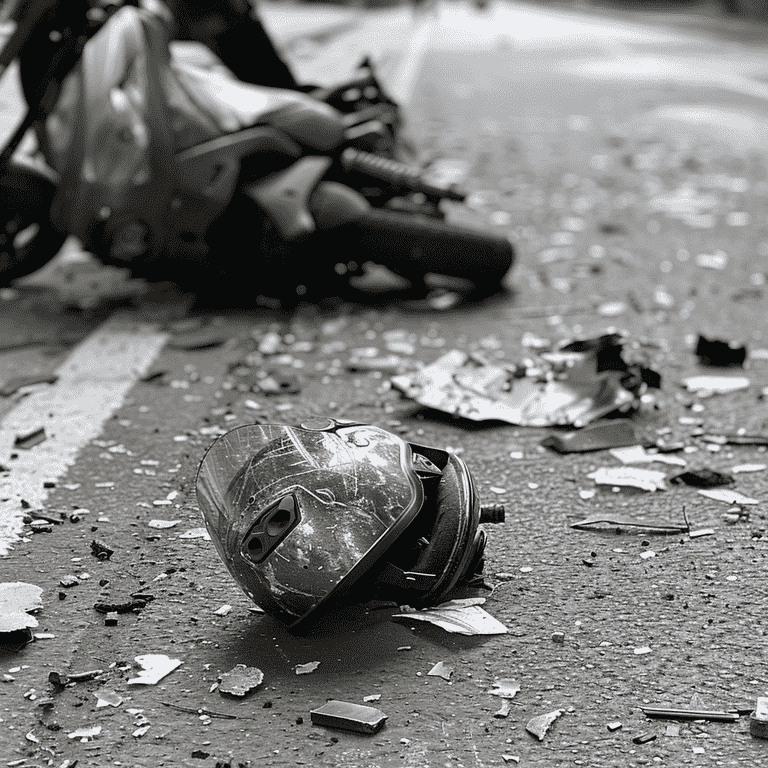
Common Types of Scooter Injuries
Head Injuries
Head injuries are among the most severe outcomes of scooter accidents. The brain is delicate, and even a minor impact can lead to significant damage.
Causes and Severity
- Falls: Losing balance or hitting a bump can result in a hard fall.
- Collisions: Crashing into a vehicle, wall, or another object can cause severe trauma.
- No Helmet: Not wearing a helmet increases the risk of head injury by up to 80%.
Importance of Helmet Use
Wearing a helmet is the best way to protect your head. Helmets absorb the shock from a fall, reducing the likelihood of a traumatic brain injury.
Long-Term Effects
Head injuries can lead to:
- Cognitive Impairment: Memory loss, difficulty concentrating.
- Physical Disabilities: Trouble with balance coordination.
- Emotional Changes: Mood swings, anxiety, or depression.
Fractures and Broken Bones
Fractures and broken bones are common in scooter accidents. Wrists, arms, and legs are particularly vulnerable.
Common Fractures
- Wrist Fractures Often occur when riders try to break a fall with their hands.
- Arm Fractures: Result from landing on an outstretched arm.
- Leg Fractures: This can happen when a rider falls sideways or is hit by a vehicle.
Typical Scenarios
- Sudden Stops: Abrupt stops can throw riders off balance.
- Collisions: Being struck by a car or hitting a stationary object.
Recovery and Treatment
- Casting: Most fractures are treated by immobilizing the bone with a cast.
- Surgery: Severe fractures might require surgery to realign the bones.
- Rehabilitation: Physical therapy helps restore strength and flexibility.
Abrasions and Lacerations
Skin injuries like abrasions and lacerations are also common. Although usually less severe, these injuries can be quite painful and prone to infection.
Causes of Skin Injuries
- Falls: Sliding across the pavement after a fall can scrape the skin.
- Collisions: Impact with rough surfaces can cause deep cuts.
Severity Levels
- Minor Abrasions: Superficial scrapes that heal quickly.
- Deep Lacerations: Cuts that may require stitches or surgical intervention.
First Aid and Medical Treatment
- Cleaning: Properly clean the wound to prevent infection.
- Bandaging: Cover with a sterile bandage to protect it while healing.
- Medical Attention: Seek a doctor if the cut is deep, wide, or continues to bleed.
Dental and Facial Injuries
Facial injuries, including dental trauma, can be particularly distressing. These injuries can affect both appearance and function.
Common Facial Injuries
- Broken Teeth: A fall or impact can chip or break teeth.
- Facial Fractures: Bones in the face, such as the nose or jaw, may break.
- Cuts and Bruises: Soft tissue injuries to the face.
Impact on Appearance and Function
- Appearance: Facial injuries may require cosmetic surgery.
- Function: Damage to the mouth can affect speaking and eating.
Treatment Options
- Dental Repair: Broken teeth may need crowns or implants.
- Surgical Intervention: Severe facial fractures may require surgery.
- Healing Time: Facial injuries can take weeks or months to heal fully.
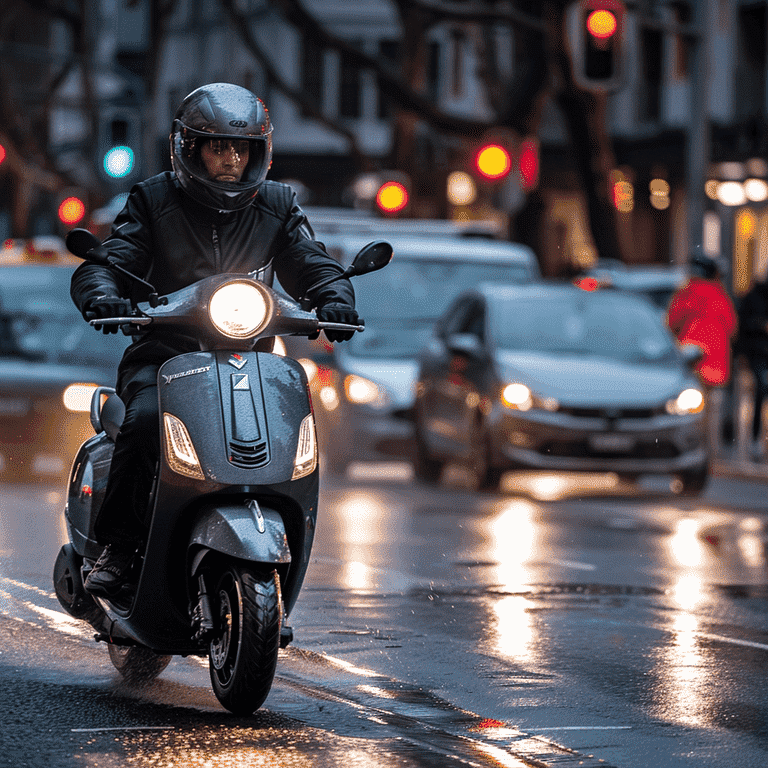
Causes of Scooter Injuries
Understanding the causes of scooter injuries is the first step to preventing them. Accidents can happen for many reasons, but most fall into a few common categories. Let’s explore these causes to avoid them on your next ride.
Rider Error
One of the most common causes of scooter injuries is rider error. Although scooters may seem easy to handle, they require focus, skill, and caution.
Lack of Experience or Skill
New riders are more prone to accidents. Developing the balance and control needed to ride a scooter safely takes time.
- Inexperience: Beginners may need to learn how a scooter handles things, especially at higher speeds.
- Poor Judgment: Novice riders might misjudge distances, speed, or road conditions.
Risky Behavior
Even experienced riders can get into trouble if they take unnecessary risks.
- Speeding: Riding too fast reduces your reaction time and increases the severity of injuries in a fall.
- Stunts: Tricks and jumps may look cool, but they significantly increase the risk of losing control.
- Ignoring Traffic Rules: Running red lights, ignoring stop signs, or weaving through traffic can lead to severe accidents.
Distracted Riding
Riding a scooter demands your full attention. Distracted riding is a significant risk factor for accidents.
- Phone Use: Texting, checking maps, or taking calls while riding is hazardous.
- Music: Listening to music with headphones can prevent you from hearing important sounds, like car horns or approaching vehicles.
- Daydreaming: It’s easy to get lost in thought, but even a momentary lapse in attention can lead to a crash.
Mechanical Failures
Sometimes, the scooter itself can cause an accident. Regular maintenance is crucial to ensure your scooter is in top condition.
Malfunctioning Brakes or Throttle
Brakes and throttle controls are essential for safe riding. If either of these fails, the consequences can be severe.
- Brake Failure: Faulty brakes can prevent you from stopping in time to avoid a collision.
- Throttle Issues: A sticky or malfunctioning throttle can cause sudden accelerations or prevent you from slowing down.
Issues with Wheels or Tires
Your scooter’s wheels and tires are its contact points with the road. Any problem here can lead to an accident.
- Flat Tires: A flat tire can cause you to lose control and crash.
- Worn Tread: Tires with worn-out treads are more prone to slipping, especially on wet surfaces.
- Loose Wheels: Improperly secured wheels can wobble or detach while riding.
Importance of Regular Maintenance
Regular checks and maintenance can help prevent these mechanical failures. Inspect your scooter before every ride.
- Check Brakes: Ensure they are responsive and not worn out.
- Inspect Tires: Look for signs of wear and tear or low air pressure.
- Test Throttle: Make sure the throttle responds smoothly and doesn’t stick.
Environmental Factors
The environment you ride in plays a significant role in your safety. Roads, weather, and visibility can all impact your ride.
Road Conditions
Bad roads are a significant hazard for scooter riders. Even a minor bump or pothole can throw you off balance.
- Potholes: Hitting a pothole can cause you to lose control, especially at high speeds.
- Uneven Pavement: Cracked or uneven surfaces can lead to falls.
- Gravel or Debris: Loose gravel, sand, or debris can make the road slippery and dangerous.
Weather Conditions
Weather can dramatically change the safety of your ride. Riding in adverse weather conditions requires extra caution.
- Rain: Wet roads are slippery, reducing your scooter’s traction and making stopping harder.
- Snow and Ice: These conditions are incredibly hazardous for scooter riders. It’s best to avoid riding in snow or ice.
- Strong Winds: High winds can push your scooter off course or make it difficult to maintain balance.
Poor Visibility
Visibility is critical to avoiding obstacles and other vehicles. When visibility is reduced, the risk of accidents increases.
- Night Riding: Riding at night is riskier because it’s harder to see hazards on the road.
- Fog: Fog reduces visibility, making it difficult to see what’s ahead.
- Sun Glare: Bright sunlight can temporarily blind you, making it hard to see obstacles or oncoming traffic.
Collisions with Other Vehicles
Scooters often share the road with cars, bikes, and pedestrians, which can lead to collisions, including the most severe scooter accidents.
Risks of Riding in Traffic
Riding in traffic is one of the most dangerous aspects of scooting. Cars are bigger, faster, and less maneuverable than scooters.
- Blind Spots: Cars have blind spots where the driver can’t see you. Riding in these areas can lead to collisions.
- Sudden Stops: Cars may stop suddenly, and you could crash into them if you’re too close.
- Lane Splitting: Riding between lanes of traffic is risky and often illegal. Cars might not see you, leading to accidents.
Common Scenarios Involving Cars, Bikes, or Pedestrians
Collisions can happen in many ways, but some scenarios are more common than others.
- Left Turns: Cars making left turns may not see a scooter coming, leading to a collision.
- Dooring: A car door opening suddenly in your path can cause a severe accident.
- Crosswalks: Pedestrians may enter your path without looking, leading to a collision.
How to Avoid Collisions
Staying safe in traffic requires awareness and defensive riding.
- Stay Visible: Wear bright clothing and use lights to make yourself more visible to drivers.
- Follow Traffic Laws: Obey all traffic signals and ride in designated lanes.
- Maintain a Safe Distance: Keep a safe distance from cars and other vehicles to allow time to react to sudden movements.
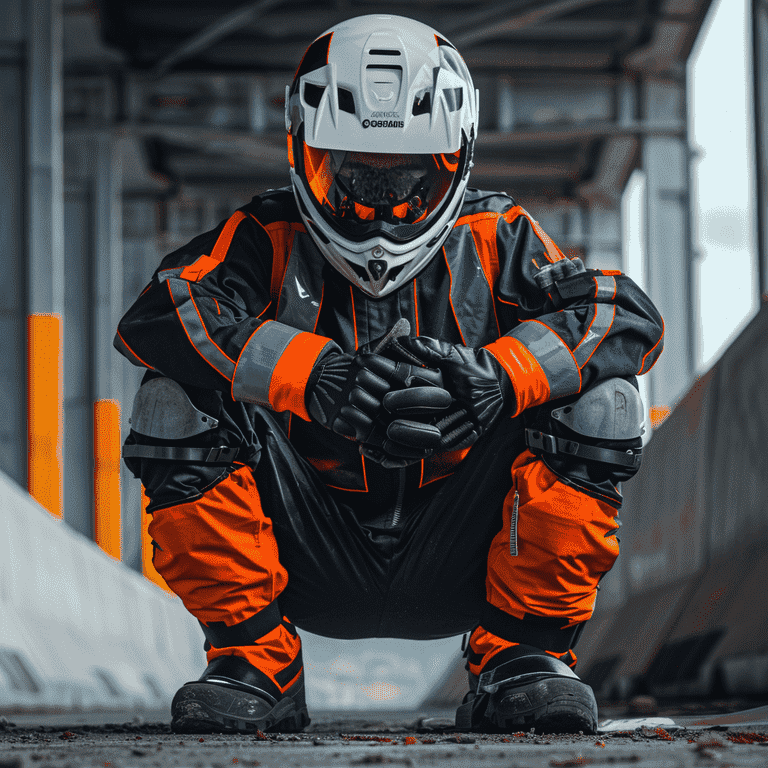
Preventing Scooter Injuries
Now that we’ve covered the causes let’s focus on prevention. With the proper precautions, you can significantly reduce your risk of injury while riding a scooter. Here’s how to stay safe.
Importance of Safety Gear
Wearing the proper safety gear is essential. It can make the difference between a minor injury and a life-threatening one.
Helmets and Their Role in Preventing Head Injuries
A helmet is the most essential piece of safety gear. It protects your head from impacts and can prevent serious brain injuries.
- Choose the Right Helmet: Ensure it fits snugly and meets safety standards.
- Wear It Every Time: Even on short rides, a helmet is crucial.
- Replace After a Crash: Helmets are designed for one impact. If you fall and hit your head, get a new helmet.
Protective Clothing
Proper clothing can protect you from scrapes, cuts, and bruises.
- Jackets: Wear a sturdy coat to protect your upper body.
- Gloves: Gloves can protect your hands from cuts and improve your grip.
- Knee and Elbow Pads: These pads cushion falls and prevent joint injuries.
Reflective Gear for Visibility
Being visible is critical to staying safe, especially when riding in low-light conditions.
- Reflective Vests: Wear a reflective vest to ensure drivers can see you.
- Lights: Use front and rear lights on your scooter to increase visibility at night.
- Bright Colors: Wearing bright clothing during the day also helps you stand out.
Safe Riding Practices
How you ride your scooter is just as important as the gear you wear. Safe riding practices can prevent many accidents.
Riding at a Safe Speed
Speeding is a significant cause of scooter accidents. Keep your speed within safe limits, especially in crowded or unfamiliar areas.
- Slow Down: Reduce speed in areas with heavy traffic or pedestrians.
- Know Your Limits: Slow down if you’re uncomfortable at higher speeds.
Staying Aware of Surroundings
Awareness is critical to avoiding accidents. Keep your eyes on the road and stay alert to what’s happening around you.
- Scan the Road: Look ahead for obstacles, vehicles, and pedestrians.
- Use Your Ears: Listen for car horns, sirens, and other sounds that signal danger.
Avoiding Distractions While Riding
Distractions are a recipe for disaster when riding a scooter.
- Put Away the Phone: Don’t use your phone while riding. If you need to check something, stop and do it safely.
- Focus on the Road: Keep your attention on the road, not on your surroundings or daydreams.
Regular Scooter Maintenance
Keeping your scooter in good condition is essential for safety. Regular maintenance can prevent many mechanical failures that lead to accidents.
Checking Brakes, Tires, and Lights Regularly
Before every ride, quickly check your scooter’s key components.
- Brakes: Test your brakes to ensure they are working correctly.
- Tires: Check for adequate tread and proper inflation.
- Lights: Ensure all lights function, especially if you ride at night.
Importance of Professional Servicing
While you can handle essential maintenance, some tasks are best left to the professionals.
- Regular Servicing: Take your scooter to a professional mechanic for regular check-ups.
- Listen for Unusual Sounds: If you hear anything unusual, like grinding or squeaking, check it out immediately.
Signs Your Scooter Needs Maintenance
Knowing the signs that your scooter needs maintenance can prevent breakdowns and accidents.
- Brake Issues: If your brakes feel soft or unresponsive, they need attention.
- Tire Wear: Worn tires should be replaced to maintain traction.
- Strange Noises: Unusual sounds often indicate a problem that needs fixing.
Choosing Safe Routes
Where you ride matters just as much as how you ride. Choosing safe routes can reduce your risk of accidents.
Importance of Selecting Safe Paths and Roads
Some roads are safer than others for scooter riding. Choose routes that minimize risks.
- Avoid High-Traffic Areas: Stick to quieter streets where possible.
- Look for Bike Lanes: Many cities have bike lanes that are also safe for scooters.
- Avoid Rough Terrain: Stick to smooth, well-paved roads.
Avoiding High-Traffic Areas
Heavy traffic increases the likelihood of accidents. Whenever possible, avoid riding in areas with lots of vehicles.
- Peak Hours: Avoid riding during rush hour when traffic is heaviest.
- Main Roads: Stay off main roads with fast-moving traffic if alternative routes are available.
Utilizing Bike Lanes and Designated Scooter Paths
Many cities have designated lanes for bikes and scooters. Use these lanes whenever possible to stay safe.
- Know the Laws: Ensure you understand where riding your scooter is legal.
- Share the Lane: Be mindful of other users in bike lanes and scooter paths.
Awareness and Education
Finally, it is essential to stay informed about scooter safety. The more you know, the better prepared you’ll be to avoid accidents.
Learning Scooter Safety Rules
Every rider should be familiar with basic scooter safety rules. These rules are designed to keep you safe and reduce the risk of accidents.
- Take a Safety Course: Many communities offer scooter safety courses that teach the basics.
- Know the Local Laws: Each area has rules about where and how you can ride. Make sure you understand the regulations in your area.
Participating in Scooter Safety Courses
Safety courses are a great way to learn how to ride safely. They often include both classroom instruction and practical riding tips.
- Find a Course Near You: Look for scooter safety courses from local governments, companies, or community organizations.
- Practice Makes Perfect: Use the skills you learn in a safety course to practice daily safe riding habits.
Promoting Awareness Among Fellow Riders
Safety is everyone’s responsibility. Encourage your friends and fellow riders to practice safe riding habits.
- Lead by Example: Show others how to ride safely by following all the rules.
- Share Safety Tips: Share the word about scooter safety by sharing tips and resources.
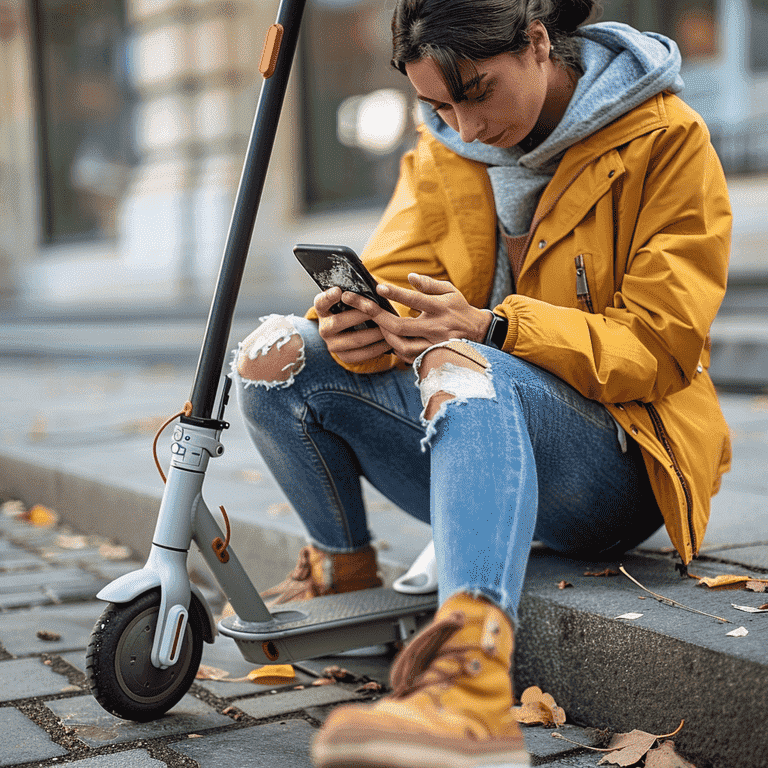
What to Do After a Scooter Injury
Even with all the precautions, accidents can still happen. Knowing what to do immediately after a scooter injury is crucial. It can significantly affect your recovery and even your legal rights. Let’s walk through the steps you should take if you find yourself in this situation.
Immediate Actions
When you’re injured, the first few minutes are critical. It’s important to stay calm and assess the situation.
Assessing the Situation and Injury
Take a moment to understand what just happened. Check yourself for injuries. Start with the most prominent and painful areas.
- Check for Head Injuries: If you hit your head, you need to be extra cautious. Look for signs of concussion like dizziness, confusion, or blurred vision.
- Look for Bleeding: Identify any areas that are bleeding. Apply pressure to stop it.
- Check for Broken Bones: Avoid moving that part of your body if you suspect a fracture.
When to Seek Emergency Medical Help
Some injuries require immediate medical attention. Don’t hesitate to call for help if you’re in doubt.
- Head Trauma: If you lose consciousness, even briefly, or have severe headaches, call 911.
- Severe Bleeding: If you can’t stop the bleeding after applying pressure, seek emergency help.
- Difficulty Breathing: If you’re having trouble breathing or feel intense pain in your chest, you need urgent care.
- Severe Pain or Deformity: You should get to a hospital immediately if a limb looks deformed or in extreme pain.
Steps to Take at the Scene of the Accident
If you’re able to move and your injuries are not severe, take the following steps:
- Get to Safety: If you’re in the middle of the road, move to a safe spot to avoid further injury.
- Call for Help: If you can, call 911 or ask someone nearby to help. It’s always better to have a professional assess the situation.
- Document the Scene: If possible, take photos of the accident scene, your scooter, and any visible injuries. This can be useful later, especially if there’s a legal case.
- Gather Witness Information: Ask for their contact information if there are any witnesses. Their statements might be helpful later on.
Seeking Medical Attention
Even if you think your injuries are minor, getting checked out by a doctor is essential. Some injuries might not show symptoms immediately but can become serious if untreated.
Importance of a Thorough Medical Evaluation
A doctor can assess your injuries more thoroughly than you can. They can identify issues that might not be immediately obvious.
- Delayed Symptoms: Injuries like concussions or internal bleeding might not show symptoms right away. A medical evaluation can catch these early.
- Documentation: A doctor’s report can be crucial if you need to file an insurance claim or pursue legal action.
Common Diagnostic Tests for Scooter Injuries
Depending on your injuries, the doctor might recommend several tests to determine the extent of the damage.
- X-Rays: To check for fractures or broken bones.
- CT Scans or MRIs: To assess head injuries or internal damage.
- Ultrasounds: To look for internal bleeding or organ damage.
Following the Doctor’s Treatment Plan
Once your doctor has diagnosed your injuries, following their treatment plan closely is essential.
- Medications: Take any prescribed medications as directed, whether for pain management, infection prevention, or other issues.
- Follow-Up Appointments: Attend all follow-up appointments to monitor your recovery.
- Rest and Recovery: Give your body the time it needs to heal. Avoid activities that could worsen your injuries.
Legal Considerations
After a scooter accident, there may be legal aspects to consider, especially if the accident wasn’t your fault. Knowing your rights can help you navigate this tricky situation.
When to Contact a Lawyer
In some cases, you might need legal assistance to ensure your rights are protected.
- Severe Injuries: If your injuries are serious or lead to long-term disability, it’s wise to consult a lawyer.
- Faulty Equipment: If the accident was caused by a mechanical failure that wasn’t your fault, you might have a case against the manufacturer.
- Involvement of Other Parties: Legal advice can help you understand your options if another vehicle or pedestrian was involved.
Understanding Your Rights After an Injury
Knowing your rights can help you make informed decisions about your next steps.
- Right to Medical Care: You can seek medical care, regardless of who was at fault.
- Right to Compensation: If someone else was responsible for your accident, you might be entitled to compensation for medical bills, lost wages, and other damages.
- Right to Privacy: Your medical information is private. No one can access it without your permission, except in certain legal situations.
Navigating Insurance Claims and Potential Lawsuits
Filing insurance claims can be complicated, but covering your costs’s an important step.
- Contact Your Insurance Company: Report the accident to your insurance provider immediately.
- Document Everything: Record all medical treatments, expenses, and any communications with insurance companies.
- Consider Legal Help: If your claim is denied or the insurance company offers a settlement that doesn’t cover your expenses, consider hiring a lawyer.
Recovery and Rehabilitation
After the immediate crisis is over, the focus shifts to recovery. This phase can be challenging, but with the right approach, you can regain your strength and return to everyday life.
Physical Therapy and Its Importance
Physical therapy is often a crucial part of recovery, especially if you’ve had a severe injury.
- Rebuilding Strength: Therapy exercises help you regain strength in injured areas.
- Improving Mobility: Physical therapists can help you restore your range of motion.
- Preventing Future Injuries: Learning proper movement techniques can prevent re-injury.
Managing Pain and Discomfort
Pain management is an integral part of the recovery process. It’s essential to find the right balance between managing pain and avoiding dependence on painkillers.
- Medications: Over-the-counter pain relievers or prescribed medications can help, but always follow your doctor’s guidance.
- Physical Therapy: Exercise can help reduce pain over time by strengthening muscles and improving flexibility.
- Alternative Therapies: Some people find relief with alternative treatments like acupuncture, massage, or chiropractic care.
Emotional Recovery and Dealing with Trauma
A scooter accident can be a traumatic experience. It’s essential to address the emotional impact as well as the physical injuries.
- Post-Traumatic Stress: After an accident, it’s normal to feel anxious or fearful, especially about riding again.
- Counseling: Talking to a counselor or therapist can help you work through these feelings.
- Support Networks: Avoid leaning on friends, family, or support groups. Sharing your experience with others who understand can be incredibly helpful.

Breaking It All Down
Scooters offer a fun and convenient way to get around but come with risks that shouldn’t be overlooked. Understanding the causes of scooter injuries and knowing how to prevent them can make all the difference in keeping yourself safe. Wearing the proper safety gear, practicing safe riding habits, and maintaining your scooter are essential steps in injury prevention.
But accidents can happen, even to the most cautious riders. If you find yourself injured, knowing what to do next is crucial. Immediate action, seeking medical attention, and understanding your legal rights are all part of ensuring a smooth recovery.
Remember, your health and safety come first. Take the time to prepare before you ride, stay aware while you’re on the road, and don’t hesitate to seek help if you need it. With the proper precautions, you can enjoy your scooter and all the freedom it brings, without putting yourself at unnecessary risk. Stay safe, ride smart, and enjoy the journey!

Frequently Asked Questions
What should I do if my scooter malfunctions while I'm riding?
If your scooter malfunctions while you’re riding, stay calm and try to slow down gradually. Use your brakes carefully to bring the scooter to a stop, if possible. If the scooter suddenly stops working, try to steer it to a safe spot off the road. Once you’re safe, assess the situation. If you can’t fix the issue on the spot, call for help or arrange for transportation of the scooter to a repair shop.
How often should I inspect my scooter for maintenance?
It’s a good idea to do a quick inspection before each ride. Check the brakes, tires, and lights to ensure everything is working properly. For more in-depth maintenance, like checking the throttle and other mechanical parts, a professional inspection every few months is recommended, especially if you ride frequently.
What are the most common mistakes new scooter riders make?
New riders often underestimate the importance of balance and speed control. They might ride too fast, especially downhill, or make sharp turns without slowing down. Another common mistake is riding without proper safety gear, like helmets, or not paying enough attention to road conditions. It’s crucial for new riders to take it slow, practice in safe areas, and always wear protective gear.
Can I ride a scooter in the rain?
Riding a scooter in the rain is not advisable, especially for new riders. Wet roads can be slippery, making it harder to control the scooter and increasing the risk of accidents. If you must ride in the rain, go slow, avoid sudden movements, and be extra cautious around turns and intersections.
What legal steps can I take if a shared scooter company’s equipment caused my injury?
If you believe that faulty equipment on a shared scooter caused your injury, you may have grounds for a legal claim. First, document the incident and your injuries with photos and gather any evidence that shows the scooter’s malfunction. Then, contact a lawyer who specializes in personal injury cases to discuss your options. They can help you determine if the scooter company was negligent and guide you through the process of seeking compensation.
How can I make my scooter more visible to others at night?
To increase your visibility at night, make sure your scooter has working front and rear lights. You can also add reflective tape to your scooter and wear bright, reflective clothing. Consider adding a flashing light or a bright headlamp to make yourself even more noticeable to drivers and pedestrians.
Are there any specific laws about where I can ride my scooter?
Yes, scooter laws vary depending on where you live. Many cities have specific rules about where scooters can be ridden, such as on sidewalks, bike lanes, or roads. It’s important to check your local regulations before riding to ensure you’re complying with the law. Some areas may require scooters to be registered or have age restrictions on who can ride them.
What should I do if I'm involved in an accident with another vehicle?
If you’re involved in an accident with another vehicle, prioritize your safety first. Move to a safe location if you can, and check yourself for injuries. Call 911 to report the accident and request medical help if needed. Exchange information with the other driver, including names, contact details, and insurance information. Document the scene with photos, and if there are witnesses, get their contact information as well. It’s also advisable to consult with a lawyer, especially if the accident resulted in significant injuries or damages.
How can I regain confidence in riding after a scooter accident?
Regaining confidence after a scooter accident takes time. Start by practicing in a safe, controlled environment, like an empty parking lot. Gradually reintroduce yourself to riding, starting with short, easy rides before returning to your regular routes. If anxiety or fear persists, consider talking to a therapist or counselor who can help you work through these feelings. It’s also helpful to take a scooter safety course to rebuild your skills and confidence.
Is it safe to carry items while riding a scooter?
Carrying items while riding a scooter can be risky if not done properly. Small, light items can be carried in a backpack, which keeps your hands free for steering. Avoid carrying anything in your hands, as this can throw off your balance and reduce your ability to control the scooter. If you need to transport larger items, consider using a scooter with built-in storage or investing in a secure basket or cargo attachment designed for scooters.

Additional Resources for You from The Rosenblum Allen Law Firm.
Molly Rosenblum Allen, Esq., has also created several other resources to assist you in your time of need. Whether you’ve been involved in a personal injury, car accident, motorcycle accident, or any other unfortunate event, we have dedicated resources to help you navigate these challenging situations:
Las Vegas Personal Injury Attorney: If you’ve suffered an injury due to someone else’s negligence, this resource provides the support and legal expertise you need to seek compensation and justice.
Las Vegas Car Accident Attorney: Car accidents can be life-altering. This guide helps you understand your rights and the steps to take if you’re involved in an auto accident in Las Vegas.
Motorcycle Accident Lawyer Las Vegas: Motorcycle accidents often result in serious injuries. This resource outlines how to protect your rights and secure the compensation you deserve.
Wrongful Death Lawyer Las Vegas: Losing a loved one is devastating. If their death was due to someone else’s negligence, this guide helps you understand how to pursue a wrongful death claim.
Truck Accident Attorney Las Vegas: Truck accidents can be complex due to the severe damages involved. This resource provides guidance on how to navigate the legal complexities of truck accident cases.
Las Vegas Drunk Driving Accident Attorney: If you or a loved one has been a victim of a drunk driving accident, this guide helps you understand your legal options and how to seek justice.
Las Vegas Slip and Fall Attorney: Slip and fall accidents can lead to serious injuries. This resource explains how to pursue a claim and hold the responsible parties accountable.
These resources are designed to provide you with the guidance and support you need during difficult times. You’re not alone—reach out to us, and we’ll be there to help you every step of the way.

Offsite Resources for You
National Highway Traffic Safety Administration (NHTSA): NHTSA offers extensive resources on road safety, including tips and regulations for various types of vehicles, including scooters.
Consumer Product Safety Commission (CPSC): CPSC provides information on product recalls and safety guidelines for consumer products, including scooters and other personal transportation devices.
American Association for Justice (AAJ): AAJ is an advocacy organization for individuals who have been injured due to negligence or wrongdoing, offering resources on personal injury law.
Centers for Disease Control and Prevention (CDC): CDC provides data and recommendations for preventing injuries, including those related to scooter accidents.
Safe Kids Worldwide: Safe Kids is dedicated to preventing injuries in children, offering valuable tips on scooter safety and helmet use.
Brain Injury Association of America (BIAA): BIAA offers resources and support for individuals affected by traumatic brain injuries, which can occur from scooter accidents.
National Safety Council (NSC): NSC provides a wealth of information on preventing injuries at home, at work, and on the road, including scooter safety tips.

A Special Message from Our Lead Attorney, Molly Rosenblum Allen, Esq

Thank you for taking the time to read through these resources. I hope you found the information helpful as you navigate this challenging time. My team and I are here to support you every step of the way. If you’re ready to discuss your situation and explore how we can assist you, please don’t hesitate to call us at (702) 433-2889. We look forward to helping you move forward.
Warm regards,
Molly Rosenblum Allen, Esq.

